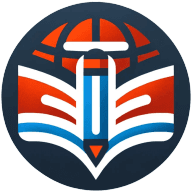6 Incorporating Technology to Enhance Student Learning: Recommended Tools
Technology is rapidly transforming the landscape of education, offering innovative tools to enhance student learning. This article explores six cutting-edge approaches that are making waves in classrooms and online learning environments. Drawing from insights provided by experts in the field, these strategies promise to revolutionize how students engage with course material and improve their academic performance.
- Spotlight Students Through Adaptive Learning Platforms
- Video Tutorials Enhance Exam Preparation
- TensorFlow Revolutionizes Data-Driven Education
- Interactive Whiteboard Transforms Online Tutoring
- Microlearning Boosts Language Course Engagement
- Adaptive Platform Personalizes Classroom Instruction
Spotlight Students Through Adaptive Learning Platforms
At Legacy, I have always believed that technology should be less of a substitute for teachers and more of a spotlight on the student. The real beauty of technology is when it layers personal connection on learning, rather than robotic structure.
One way we have done this is through adaptive learning paths — meaning the platform silently changes to a student's pace, or recognizes when they are stuck. Rather than waiting for the report card, we can step in right away with a short, or even just an informal one-on-one check-in. It feels much more like a coach recognizing you on the playing field than a machine grading your efforts.
We also embrace collaboration tools. Oftentimes, parents will believe that online school is isolating, but with real-time annotation, group debates, and small breakout sessions, our students frequently tell us they are better connected than in a traditional classroom.
If I were to suggest one tool, it would not be the most exciting AI app. It would be a practical, but meaningful piece of software like Google Classroom and collaboration annotation tools. When coupled, they offer structure without constraining students, and invite them to learn together.

Video Tutorials Enhance Exam Preparation
As an English tutor, I've found that technology is most powerful when it supports learning rather than distracts from it. The biggest shift for my students has been access to a lesson library of recorded video tutorials that I have developed over the summer. They can rewatch explanations of exam questions, pause and replay in their own time, and then come to live small-group sessions ready to apply the skills. It gives them a real head start and builds confidence.
Alongside this, I make strategic use of Zoom with a visualizer. It allows me to model exam answers in real time: annotating extracts, planning essays, and showing the thought process that examiners are really looking for. Students can see the "invisible thinking" made visible.
If I had to recommend just one tool, it would be a simple visualizer (paired with Zoom or in-person teaching). It's not flashy, but it's powerful: it brings texts and exam skills to life in a way that students instantly connect with.

TensorFlow Revolutionizes Data-Driven Education
At Tutorbase, we implemented TensorFlow to analyze student performance data across our 500+ centers, which has significantly improved our ability to predict student progress and identify resource needs. This technology has cut our data processing time in half while providing more accurate insights that directly inform our curriculum recommendations. TensorFlow has proven invaluable for understanding learning patterns and creating more personalized educational experiences for our students. I would recommend TensorFlow for educational institutions looking to leverage data for meaningful improvements in student learning outcomes.

Interactive Whiteboard Transforms Online Tutoring
One of the most meaningful ways we have incorporated technology into student learning is by using interactive platforms that make tutoring more engaging and effective. We use Lessonspace for live sessions, which allows students to collaborate with their tutor on a shared whiteboard, upload assignments, and solve problems together in real-time. This keeps lessons highly interactive and ensures students are actively participating rather than just listening.
On the operations side, we also use a platform to manage scheduling, billing, and communication, which helps streamline logistics so our tutors and students can focus fully on learning. Together, these tools create a smooth and consistent experience for both families and our team.
What makes Lessonspace especially impactful is its ability to support different learning styles and adapt lessons to each student's needs. The interactive features help tutors bring concepts to life, while students gain the confidence that comes from practicing alongside their tutor in real-time. We supplement this with session notes prepared by tutors outside the platform, which are then shared with parents to highlight progress and next steps.
If I had to recommend one platform, Lessonspace would be it, as it closely mirrors the dynamics of in-person learning while offering the flexibility and accessibility of online tutoring.

Microlearning Boosts Language Course Engagement
I've found that incorporating microlearning strategies through technology has significantly enhanced student engagement in my language courses. By having students create short Spanish videos on Flipgrid and submit them through Google Classroom, I was able to provide more immediate feedback while giving students creative ownership of their learning. For assessment purposes, game-based platforms like Blooket and Gimkit transformed our end-of-unit quizzes into interactive experiences that students actually looked forward to completing. These tools not only improved engagement but also reinforced learning through repetition in formats that students found genuinely enjoyable.

Adaptive Platform Personalizes Classroom Instruction
I integrated an adaptive learning platform into my classroom that personalizes lessons based on each student's progress and comprehension. This allowed me to pinpoint gaps in understanding and adjust content dynamically, which boosted engagement and retention. I often recommend platforms like Khan Academy or Edmodo because they provide real-time analytics, interactive exercises, and easy tracking of student performance. By leveraging these tools, I could create small, targeted learning groups, assign customized practice, and monitor improvements without spending extra hours on manual grading. The data also helped me provide more actionable feedback to students and parents, which encouraged accountability and consistent growth. Overall, technology didn't replace teaching—it amplified it, letting me focus on mentoring while students progressed at their own pace. The platform's reporting features were especially valuable, giving me a clear picture of both individual and class-wide performance trends.


